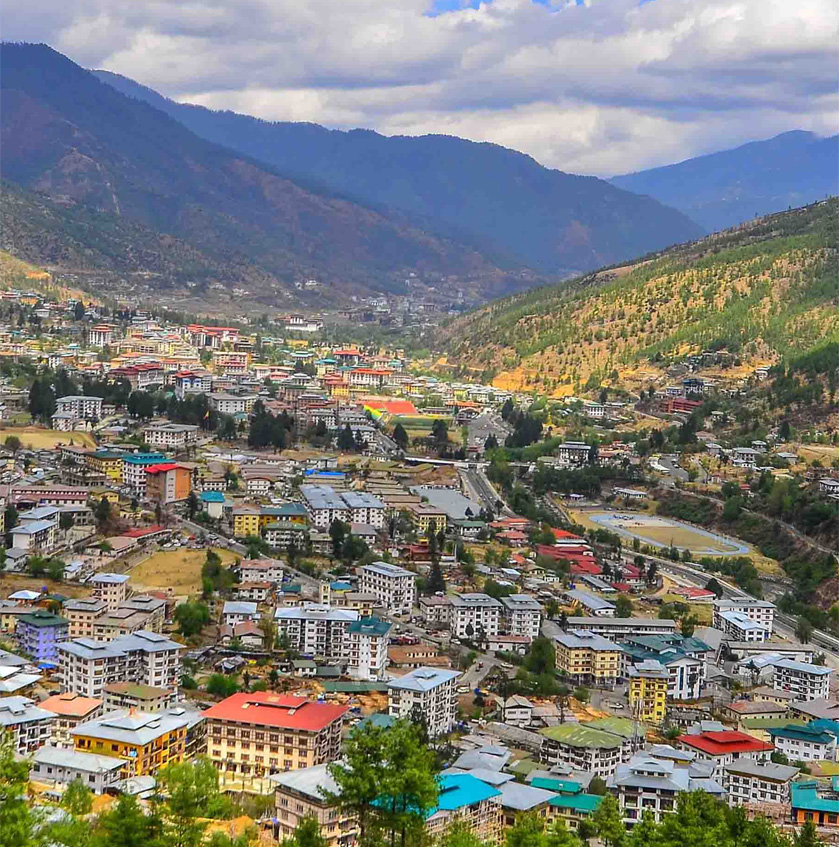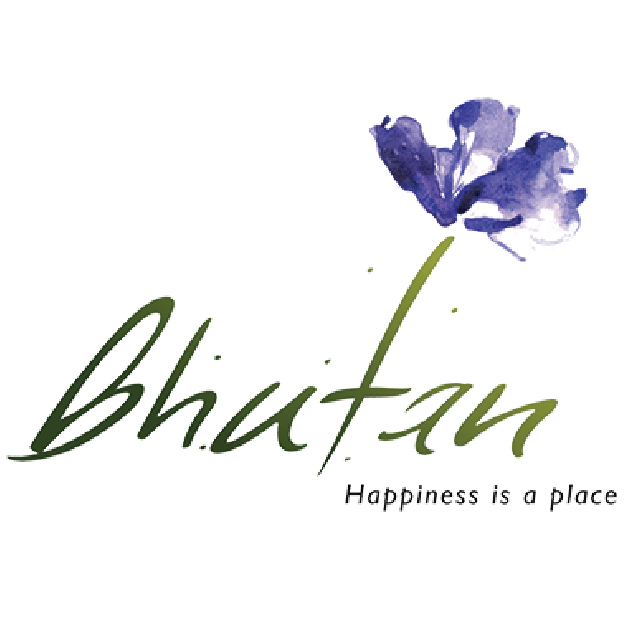TOP DESTINATIONS

Thimphu
Nestled in the picturesque Himalayan mountains, Thimphu, the capital of Bhutan, offers a unique blend of tradition and modernity. Unlike bustling metropolises, this charming city exudes serenity, with a strong focus on preserving Bhutan's rich culture and heritage. Visitors are greeted by vibrant prayer flags, traditional architecture, and the aroma of incense wafting through the air.
Thimphu is located in the western part of Bhutan at an altitude of around 2,300 meters. It is the capital of the country and is located in the fertile valley of the Thimphu river. Though small with a population of about 100,000 people, Thimphu is a cosmopolitan city with an active resident expatriate population from countries such as India, Japan, Austria, Switzerland, the Netherlands, Denmark, New Zealand, Bangladesh, and South Korea. Thimphu is a cauldron of the new and the old with ancient monuments, fortresses, and temples juxtaposed with modern infrastructure.
Summers are pleasant and warm, while winters are cold but sunny and clear. Thimphu city has a well-established infrastructure which includes a modern telecommunications network, good road links, modern and traditional indigenous hospitals, a reliable power supply, and a peaceful and stable community.
The iconic Tashichho Dzong, a stunning fortress and monastery, stands as the heart of Thimphu's spiritual and administrative life. The city's Weekend Market is a bustling hub where locals and tourists can explore fresh produce, handmade crafts, and traditional goods. Meanwhile, the National Memorial Chorten offers a serene space for reflection.
Thimphu’s vibrant streets, dotted with cafes, museums, and handicraft shops, provide a glimpse into contemporary Bhutanese life. With its striking landscapes, warm hospitality, and deep spirituality, Thimphu is a must-visit destination for those seeking a cultural escape in harmony with nature.
What are the top attractions to visit in Thimphu?
Thimphu, Bhutan's capital, is brimming with cultural and natural wonders. Here are some top attractions to explore:
-
Tashichho Dzong: A majestic fortress and monastery that serves as the seat of Bhutan's government and religious leaders.
-
Buddha Dordenma: A towering 51-meter gold-plated statue of Buddha, offering breathtaking views of the valley.
-
Dochula Pass: A scenic mountain pass adorned with 108 chortens, providing panoramic views of the Himalayas.
-
National Memorial Chorten: A serene stupa where locals gather for prayer and meditation.
-
Motithang Takin Preserve: A wildlife reserve dedicated to Bhutan's national animal, the takin.
-
Weekend Market: A vibrant spot to experience local culture, crafts, and fresh produce.
-
National Folk Heritage Museum: A glimpse into Bhutanese rural life and traditions.
Each site offers a unique experience, blending spirituality, history, and natural beauty.
What is the best time to visit Thimphu?
The best times to visit Thimphu are during spring (March to May) and autumn (September to November). In spring, the city comes alive with blooming wildflowers and lush greenery, while the weather remains pleasant, with temperatures ranging from 4°C to 23°C. Autumn offers crisp air, clear skies, and stunning views of the Himalayan peaks, with temperatures between 4°C and 20°C.
Winter (December to February) transforms Thimphu into a serene winter wonderland, with occasional snowfall and temperatures dropping to -1°C. While some routes may be closed due to snow, the city's charm remains intact. Summer (June to August) brings monsoon rains, making it less ideal for travel, but the vibrant greenery can still be appealing to some.
Each season has its unique charm, but spring and autumn are particularly favored for outdoor activities and sightseeing




